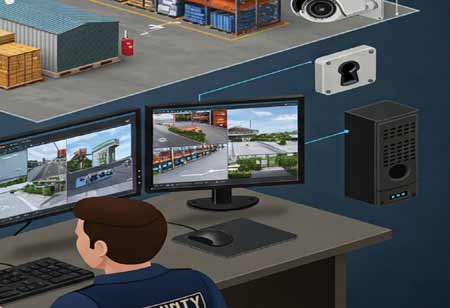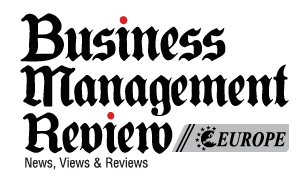Thank you for Subscribing to Business Management Review Weekly Brief
I agree We use cookies on this website to enhance your user experience. By clicking any link on this page you are giving your consent for us to set cookies. More info
Surveillance Redefined: The Integration of AI and Cloud Technologies
Remote video surveillance technologies enhance security through real-time monitoring, AI-driven analytics, and cloud integration, offering scalable solutions that improve efficiency and deter crime across various sectors.

By
Business Management Review | Wednesday, July 30, 2025
Stay ahead of the industry with exclusive feature stories on the top companies, expert insights and the latest news delivered straight to your inbox. Subscribe today.

Remote video surveillance solutions are transforming the global security landscape by offering real-time monitoring, intelligent threat detection, and efficient asset protection without the constraints of physical proximity. Enabled by networking, cloud computing, and AI-driven analytics advancements, these systems have evolved from simple closed-circuit television setups to intelligent, scalable security frameworks suitable for various sectors. Organizations across industries now recognize the strategic value of surveillance as a crime deterrent and as a data-driven tool for operational efficiency, customer behavior insights, and proactive risk management.
The demand for flexible, high-performance surveillance platforms has never been greater, especially with the expansion of remote operations and growing awareness of physical and cyber threats. Scalable cloud models allow organizations to adjust demand-based capacity, avoiding hefty upfront investments and enabling predictable operating expenditures. Remote video surveillance solutions are more than a security necessity—they are a strategic enabler of safety, compliance, efficiency, and insight across sectors.
Growth Drivers and Technological Implementation
Businesses with multiple locations, retail chains, construction sites, logistics hubs, and critical infrastructure require centralized, continuous surveillance capabilities. Remote video systems enable centralized control rooms to oversee numerous sites from a single interface, improving response times and reducing the cost of maintaining on-site personnel. Remote video surveillance significantly reduces the need for on-site security guards and physical infrastructure by leveraging IP cameras, cloud storage, and internet connectivity. Cloud integration ensures redundancy, scalability, and centralized management, critical features for large-scale or remote deployments.
AI and ML are revolutionizing remote surveillance. Intelligent video analytics allow cameras to detect and interpret activities such as motion, intrusion, loitering, abandoned objects, or unauthorized access in real time. Facial recognition, license plate recognition (LPR), people counting, and behavior analysis are among the most powerful AI-driven features now being integrated into surveillance platforms. Cybersecurity is another area of focus in implementation. Leading vendors now prioritize end-to-end encryption, multi-factor authentication, and network segmentation to protect sensitive video data and prevent unauthorized access.
Trends in remote surveillance reflect growing integration with other systems. Video management platforms are linked with access control, fire detection, and alarm systems to create unified security ecosystems. Mobile access through smartphones and tablets gives users flexibility in monitoring and responding to alerts. There’s a shift toward environmentally sustainable systems. Solar-powered cameras and energy-efficient components are gaining popularity in remote or off-grid locations, minimizing carbon footprints while ensuring uninterrupted surveillance coverage.
Sector-Specific Applications and Market Penetration
Surveillance systems deter theft, reduce shrinkage, and provide insights into customer behavior, store traffic patterns, and staff performance. Video analytics can identify bottlenecks, measure customer dwell times, and improve store layout for better sales conversion. In construction and real estate, remote monitoring is critical in securing sites against unauthorized access, vandalism, and equipment theft. With the ability to monitor 24/7 from any location, project managers and security teams can keep tabs on multiple worksites simultaneously, ensure worker safety compliance, and document progress through time-lapse video footage.
The transportation and logistics sector uses remote surveillance to monitor vehicle yards, loading docks, warehouses, and freight corridors. By integrating surveillance with GPS and fleet management systems, companies can enhance the security of goods in transit, prevent pilferage, and verify incidents or delays. Real-time alerts help intercept threats quickly and avoid costly disruptions. Public sector applications are extensive. Cities and municipalities deploy surveillance systems for urban safety, traffic management, and emergency response.
Future of Remote Surveillance
With increased surveillance comes scrutiny around how footage is captured, stored, shared, and used. Organizations must implement clear policies on video usage, ensure transparency, and utilize features such as data anonymization and masking. AI-powered facial recognition systems, for instance, can now blur faces in real time unless a match is required for law enforcement or access control purposes. Bandwidth limitations can also hinder real-time video transmission, especially in remote or rural areas. Edge computing, where video data is processed locally on the camera before transmission, helps reduce bandwidth usage and latency.
Solar-powered cameras with battery backups provide sustainable solutions in areas without a reliable power supply. Scalability and system interoperability can become complex as organizations expand. Ensuring new cameras, sensors, or software integrate smoothly with existing systems. Open-platform architectures and adherence to global standards can facilitate interoperability and future-proof deployments. Surveillance systems can become points of vulnerability if not properly secured. Cyber threats, including ransomware attacks on networked surveillance infrastructure, have increased.
Vendors address these risks with end-to-end encryption, regular firmware updates, intrusion detection systems, and network hardening practices. While AI reduces the frequency of irrelevant alerts, misidentifications still occur due to lighting conditions, environmental factors, or software limitations. Continuous training of AI algorithms using real-world data and integration with sensor fusion technologies (like motion detectors or thermal imaging) can improve accuracy and reduce alarm fatigue.
Remote video surveillance will continue to evolve alongside AI and 5G technologies. The roll-out of 5G networks promises ultra-low latency and high-bandwidth video transmission, enabling real-time HD streaming and remote control of surveillance drones or robotic patrol units. Integration with business intelligence tools will turn surveillance from a cost center into a strategic asset. Surveillance systems will become increasingly user-centric and adaptable.






